Overview of the ISEE Upper-Level Mathematics Test
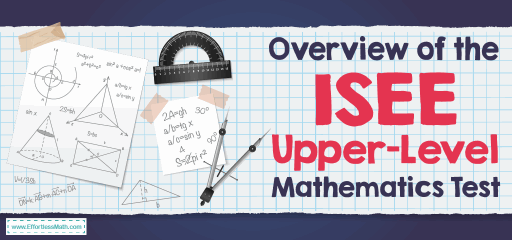
The Upper Level of the Independent School Entrance Exam, or the Upper-Level ISEE, is a passing test for 8th to 11th-grade students who want to apply to the 9-12th grade in an independent school. The independent schools involve boarding schools, military academies, private secondary schools, and a few public schools. During the three hour examination, students work through five sections that include:
- Verbal Reasoning (20 minutes for 40 questions)
- Quantitative Reasoning (35 minutes for 37 questions)
- Reading Comprehension (35 minutes for 36 questions)
- Mathematics Achievement (40 minutes for 47 questions)
- Essay (30 minutes for 1 prompt)
The mathematic include 2 parts: Quantitative Reasoning, and Mathematics Achievement. Here is some information about these sections.
The Absolute Best Book to Ace the ISEE Upper-Level Math Test
How is the structure of Mathematics Achievement of Upper-Level ISEE?
The Mathematics Achievement section of the Upper-Level ISEE assesses how a candidate evaluates the math concepts they encounter while studying at higher levels (ninth to twelfth grade).
The Math Achievements section contains 47 multiple-choice questions, and students have 40 minutes to go through them all. The best way to deal with this limited time is to first answer all the questions that come easily. If there is a question that seems complicated or confusing, skip it and return to it later. Then, when all the easy work is done, use the remaining time to work on the hard stuff.
The questions related to the mathematics achievement section will all be based on the standards outlined by the National Council of Teachers of Mathematics (NCTM) for the following categories:
Numbers and Operations:
- Understand numbers, meanings of operations, relationships among numbers, and relationships among operations
- Classify, perform operations on, make reasonable estimates of, and compare whole numbers, rational numbers, integers, real numbers, irrational numbers, and complex numbers
- Perform operations on vectors and matrices and compute combinations and permutations
Geometry:
- Analyze characteristics of geometric figures
- Describe and visualize spatial relationships for geometric objects
- Describe and classify and basic 2‐ and 3‐dimensional figures
- Understand and use coordinate grids, which involves transformations of geometric figures
- Understand the concepts of symmetry, congruency, and similarity
Measurement:
- Develop, and use formulas for measurable properties of objects
- Understand and use formulas for the surface area, area, and volume of geometric figures, including spheres, cones, and cylinders
- Make decisions about scales and units that are appropriate for problem situations involving measurement
Data Analysis & Probability
- Interpret, analyze, and make inferences about a set of data
- Understand and apply the concepts of probability
- Collect, interpret, display, and make predictions about a set of data
- Calculate mode, mean, median, standard deviation, range, and first and third quartiles of a set of data
- Calculate probabilities and expected values
Algebra:
- Understand, represent, and analyze mathematical, algebraic, and graphical situations involving relations, patterns, and functions
- Understand functions and relations when presented as symbolic graphs, equations, and tables
- Model real‐world situations using symbolic graphs and equations
- Use symbolic manipulation to determine equivalent equations, expressions, and inequalities
The questions in mathematical problems require calculations, but unlike the quantitative reasoning section, there will be less emphasis on interpreting reasoning and information through solutions. Instead, students simply need to identify what kind of math problem they are facing and then choose the correct formula or process to solve it.
The only resource you will ever need to ACE the ISEE Upper-Level Math Test
How is the structure of Quantitative Reasoning of Upper-Level ISEE?
The quantitative reasoning will take about 35 minutes, so the student has less than a minute to answer all 37 questions in this section. The student must be able to complete all the questions quickly but they should also be careful in their answers.
This section includes word problems and quantitative comparison questions. Word problems rely more on reasoning skills than actual calculations, but there is much calculation required for many of the problems. However, the key skill measured is the student’s ability to select relevant information and determine the best process to find the missing information requested.
For quantitative comparison questions, students see two quantities and must choose which one is larger. In some cases, they may be equal, or they may not be enough information to determine the answer. The quantities may be expressed in the form of equations, word problems, geometric shapes, and measurements, or other mathematical expressions, so to find the actual value of any quantity requires reasoning and sometimes calculation.
While all of these questions will focus more on measuring reasoning and problem-solving skills, the student needs a foundation of understanding the following areas in mathematics:
- Numbers and operations
- Algebra
- Measurement
- Geometry
- Problem Solving
- Probability
- Data Analysis
Fortunately, these fields overlap with what the student needs to learn for the mathematics achievement section, so all studies done for that section will also benefit this section. However, it is still important to prepare specifically for the reasoning and problem-solving required in this section.
Is the Upper-Level ISEE test hard?
The Upper-Level ISEE is a very difficult test. Because of this, there is something in this test that you are not expected to know. It is important to know you will only be compared to other students at your grade level.
Do you get a formula sheet on the Upper-Level ISEE Mathematics?
You will not be given formula in the ISEE Upper-Level math test. So you must memorize the necessary formulas to remember them on the day of the test quickly.
Can you use a calculator on the Upper-Level ISEE Mathematics?
You are NOT allowed to use the calculator for any of the questions on Mathematics Achievement of Upper-Level ISEE.
How is the Upper-Level ISEE Mathematics scored?
The ISEE scaled score for the mathematics section is from 760 to 940. The scaled score is taken from the raw score – the number of questions the student answered correctly – but is more useful than the raw score because the scaled score has the same meaning without which form of the assessment is used.
The Best Books to Ace the ISEE Upper-Level Test
Related to This Article
More math articles
- Pattern Power: How to Unravel Division Trends Across Expanding Place Values
- Incorporating Technology in Math Education: Tools and Techniques for Modern Teachers
- How to Develop Foundational Math Skills for Career Success
- Area Models Unfolded: How to Multiplying Decimals by Two-digit Whole Numbers
- Understanding and Overcoming Math Challenges for Students
- How to Calculate the Volume of a Truncated Cone: Step-by-Step Guide
- 5th Grade Georgia Milestones Assessment System Math Practice Test Questions
- How to Simplify Variable Expressions? (+FREE Worksheet!)
- 8th Grade ACT Aspire Math Practice Test Questions
- How to Interpret Remainders of Division Two-digit Numbers By One-digit Numbers
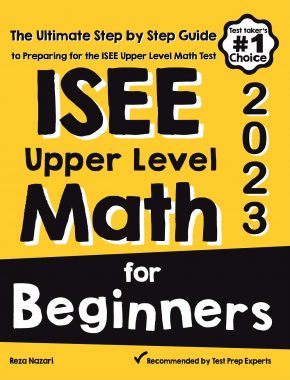
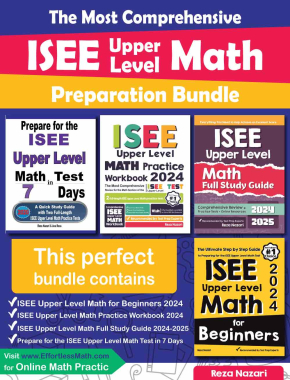
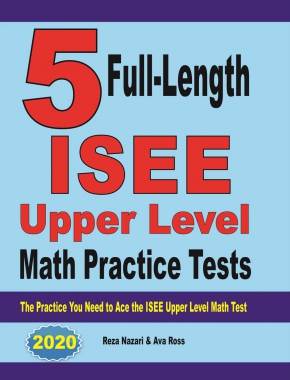
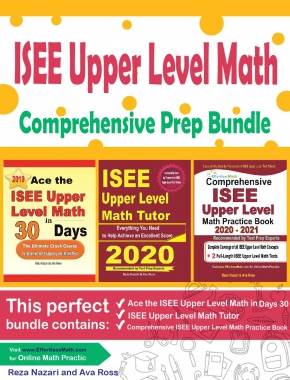
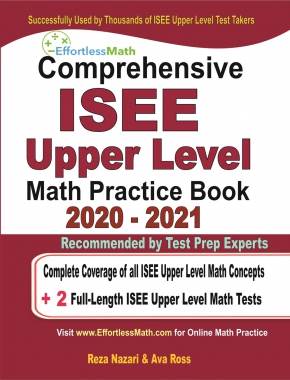
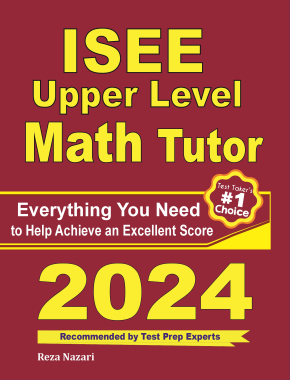
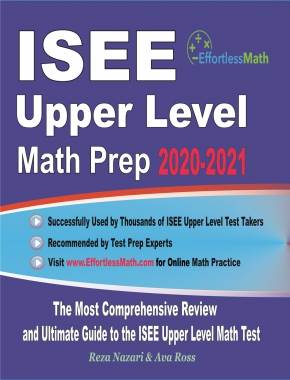
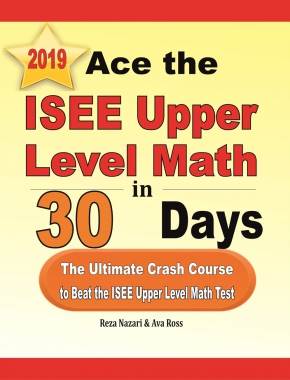
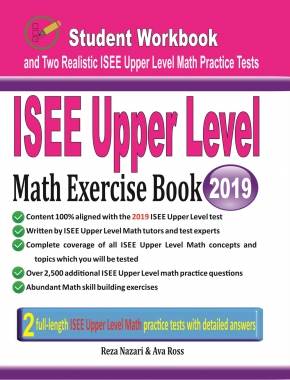
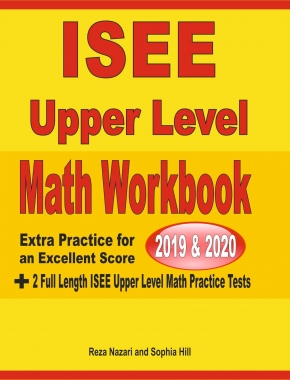
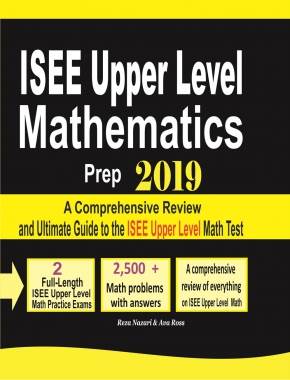
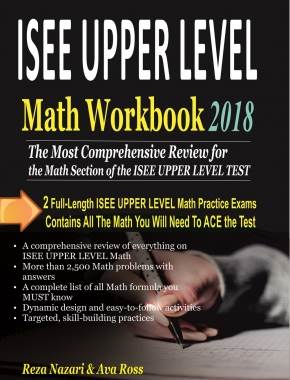



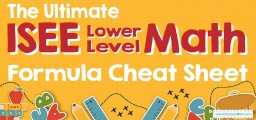

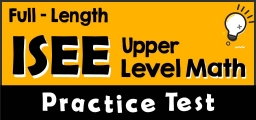



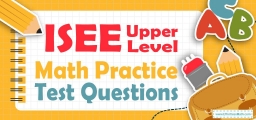
What people say about "Overview of the ISEE Upper-Level Mathematics Test - Effortless Math: We Help Students Learn to LOVE Mathematics"?
No one replied yet.